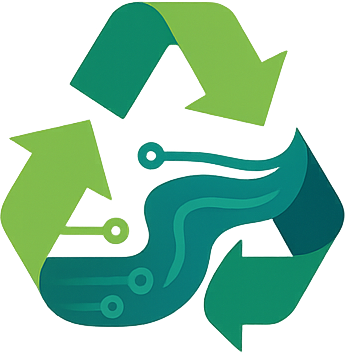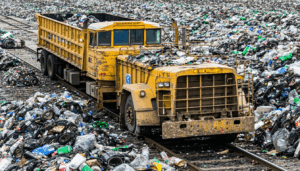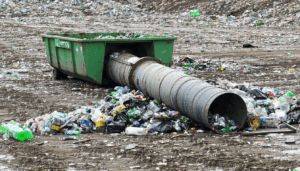In the United States, the issue of solid waste disposal has reached a critical juncture as landfills near capacity and environmental concerns mount. With over 292 million tons of municipal solid waste generated annually, according to the Environmental Protection Agency (EPA), the nation faces mounting pressure to innovate and reform waste management practices. This article delves into the current state of solid waste disposal in the U.S., explores recent developments, and highlights potential solutions that could shape a more sustainable future for waste handling.
The Growing Problem of Solid Waste Disposal in the U.S.
The sheer volume of waste produced in the U.S. is staggering. The EPA’s 2023 report indicates that each American generates about 4.9 pounds of trash daily, contributing to the rapid filling of landfills. Many facilities, particularly in densely populated states like California and New York, are projected to reach capacity within the next decade. This looming crisis has sparked debates over how to manage waste effectively while minimizing environmental harm.
Beyond capacity issues, improper solid waste disposal poses significant risks. Leachate from landfills can contaminate groundwater, while methane emissions—a potent greenhouse gas—exacerbate climate change. Addressing these challenges requires urgent action from policymakers, businesses, and communities alike.
Recent Developments in Waste Management
Several notable initiatives have emerged to tackle the solid waste crisis. In 2022, the federal government allocated $275 million through the Bipartisan Infrastructure Law to support recycling and waste reduction programs. States like Massachusetts have also implemented strict landfill bans on certain materials, pushing for composting and recycling alternatives.
Technology is playing a pivotal role as well. Waste-to-energy plants, which convert trash into electricity, are gaining traction. According to Dr. Emily Harper, a sustainability expert at the University of California, “Innovative technologies like anaerobic digestion and advanced recycling systems could reduce landfill dependency by up to 30% in the next decade if scaled effectively.”
Impact on Communities and Stakeholders
The burden of solid waste disposal often falls hardest on marginalized communities. Landfills are frequently located near low-income neighborhoods, raising concerns about environmental justice. Residents in these areas report higher rates of respiratory issues and other health problems linked to pollution from waste sites.
Local governments face financial strain as well. Managing landfills, enforcing regulations, and investing in new infrastructure require substantial budgets. Meanwhile, businesses are under pressure to adopt sustainable practices, with many large corporations committing to zero-waste goals by 2030.
Potential Solutions for a Sustainable Future
Addressing the solid waste crisis demands a multi-faceted approach. Experts suggest focusing on the following strategies:
- Enhanced Recycling Programs: Only 32% of U.S. waste was recycled in 2021, per EPA data. Expanding access to recycling facilities and educating the public could boost this figure.
- Composting Initiatives: Organic waste accounts for nearly 25% of landfill content. Community composting programs can divert this material while producing valuable soil amendments.
- Policy Reforms: Stronger regulations on single-use plastics and incentives for circular economy practices could drive systemic change.
- Public-Private Partnerships: Collaboration between governments and companies can fund innovative projects, such as converting plastic waste into fuel.
As John Mitchell, a policy analyst at the National Waste & Recycling Association, notes, “Sustainable solid waste disposal isn’t just an environmental issue—it’s an economic opportunity to create jobs and build resilient communities.”
Looking Ahead: Implications and Future Outlook
The trajectory of solid waste disposal in the U.S. will have far-reaching consequences. If current trends persist, landfill shortages could lead to increased illegal dumping and higher costs for municipalities. On the other hand, embracing innovation offers hope for reducing waste footprints and mitigating climate impacts.
Balancing economic growth with environmental stewardship remains a challenge. While some advocate for incineration as a quick fix, others warn of air quality risks, highlighting the need for careful evaluation of all options. Ultimately, fostering a culture of reduction, reuse, and recycling will be key to long-term success.
In conclusion, the U.S. stands at a crossroads in managing solid waste disposal. With landfills nearing capacity, environmental risks rising, and communities bearing uneven burdens, the time for action is now. By investing in technology, policy reform, and public awareness, the nation can pave the way for a cleaner, more sustainable future.
Frequently Asked Questions (FAQ)
1. How much solid waste does the U.S. produce annually?
The U.S. generates over 292 million tons of municipal solid waste each year, according to the latest EPA data.
2. What are the main challenges in solid waste disposal?
Key challenges include limited landfill space, environmental pollution from leachate and methane emissions, and unequal impacts on low-income communities.
3. What solutions are being proposed for better waste management?
Solutions include expanding recycling and composting programs, adopting waste-to-energy technologies, implementing stricter policies on plastics, and fostering public-private partnerships.
4. How can individuals contribute to reducing solid waste?
Individuals can reduce waste by minimizing single-use items, recycling properly, composting organic materials, and supporting sustainable products and policies.





